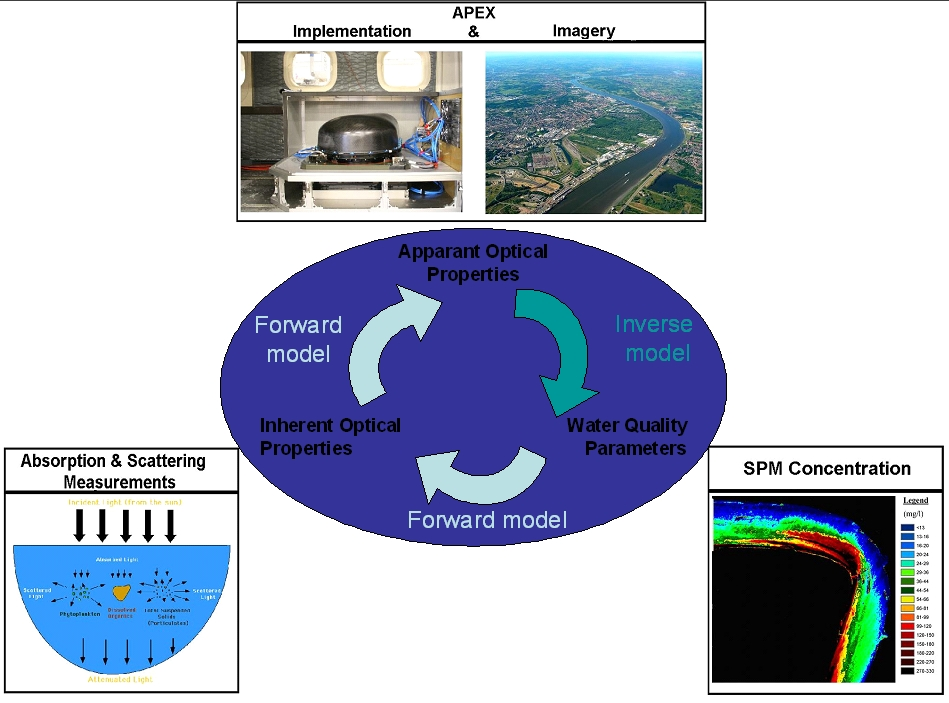Context and objectives
Over the past few years, a joint Swiss/Belgian initiative resulted in a project to build a new generation airborne imaging spectrometer, namely APEX (Airborne Prism Experiment) under the ESA funding scheme. APEX is now operationally available to the user community. The MICAS (Monitoring Inland and Coastal waters with the APEX Sensor)
project aims at the development of high quality level 3 products related to inland and coastal waters into the APEX processing chain. Hence, the main objectives of the project are:
- to find water quality algorithms optimized for APEX which can be implemented into the CDPC and
- to automatically generate accurate concentration maps of chlorophyll, CDOM and suspended matter.
MICAS focuses on state-of-the-art algorithms to derive chlorophyll, CDOM and suspended matter concentrations maps. An innovative approach, based on wavelet transform is introduced and tested for the inversion of (simplified) bio-optical models. In the first phase the algorithms are validated on the basis of simulated APEX spectra from different water types (inland, coastal and estuarine waters). Special attention is given to the simulation of realistic APEX spectra, including atmospheric and sensor noise.
Project outcome
- The main outcome are water quality algorithms optimized for the APEX sensor and integrated into the CDPC. These algorithms include new and innovative techniques for handling the inversion problem of bio-optical models fine tuned to the APEX spectral characteristics.
- An indication of the sensitivity of the inversion models to errors in the input data.
- A successful APEX flight with high quality imagery.
| Project leader(s): | VITO - Remote Sensing - Teledetectie en aardobservatieprocessen | |||
| International partner(s) |
|
|||
| Location: |
Country:
|
|||
| Related presentations: |
|
|||
| Related publications: | ||||
| Website: | ||||
